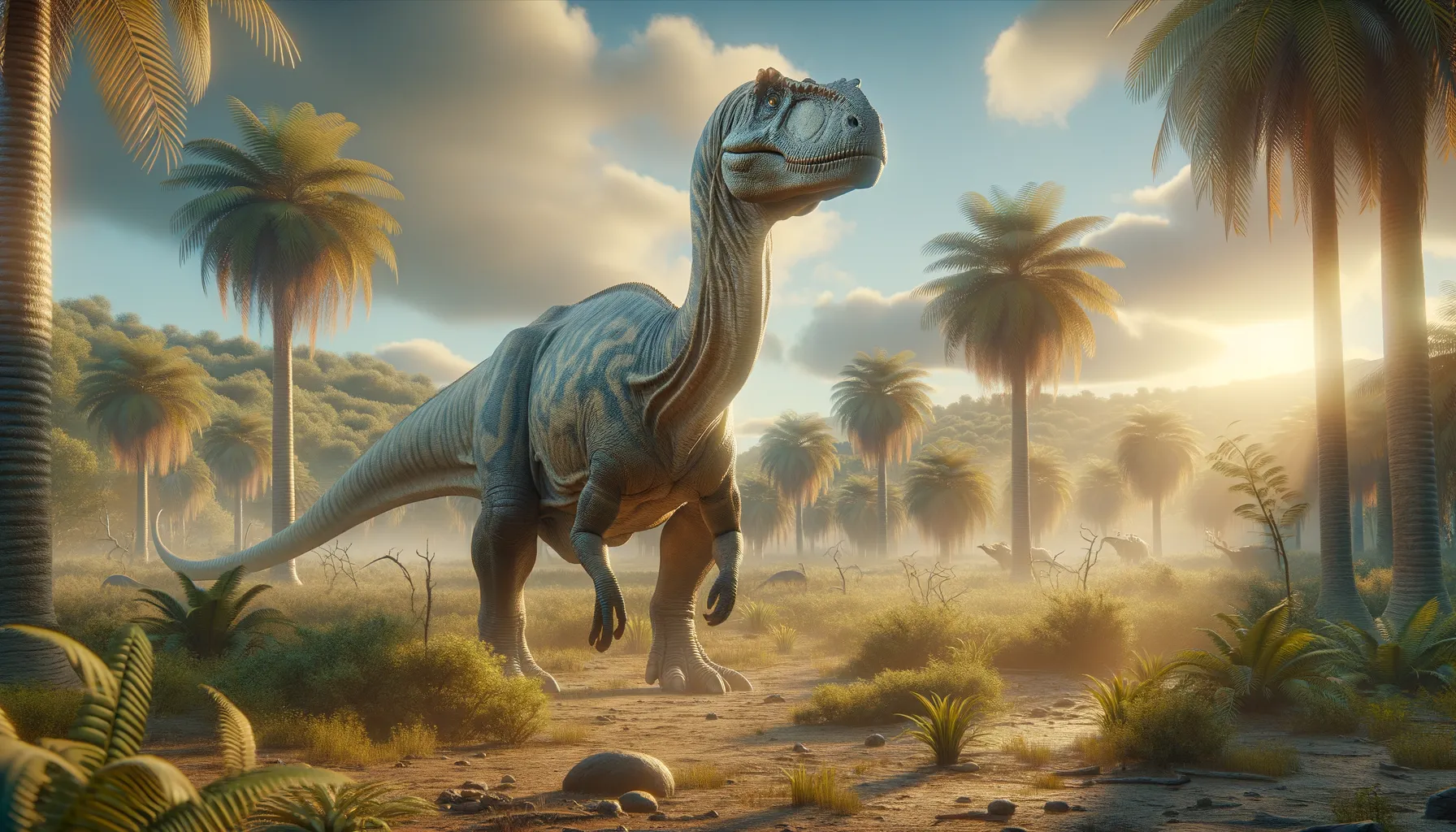
Isisaurus
A towering giant from the ancient past.
Period
Cretaceous
Length
Length was around 18 meters.
Height
Approximately 6-7 meters tall at the shoulder.
Weight
Weighed up to 15 tons.
Isisaurus is a sauropod dinosaur known for its long neck and tail, which lived during the late Cretaceous period. It roamed the land that is now India, displaying massive size typical of its kind. Its unique skeletal features, such as a more upright neck, contribute to its distinction among sauropods. Isisaurus played an intriguing role in its ecosystem, providing insight into dinosaur life on ancient Gondwanan continents.
Diet
Isisaurus was a herbivore, feeding primarily on foliage found in the treetops, which its long neck allowed it to reach easily. Its large, peg-like teeth helped it strip leaves off branches, making it an efficient plant eater.
Hunting
As a herbivore, Isisaurus did not hunt for food. Instead, it likely spent long hours grazing on plant material, moving slowly to conserve energy while finding enough to sustain its massive body.
Environmental challenges
Living in the Cretaceous period, Isisaurus faced changing climates and habitats, which could include periods of drought or changes in plant availability. It may have had to migrate to find suitable feeding grounds as local resources were depleted. Being such a large dinosaur, it also faced challenges from predators, although its size would deter many attackers.
Speed
Slow-moving due to its massive size.
Lifespan
Estimated to be several decades long.
First discovery
Found in India, described in 1997.
Fun Facts
- Isisaurus was a long-necked dinosaur that lived around 70 million years ago during the Late Cretaceous period.
- It was named after the Indian Statistical Institute in India, reflecting its discovery in the country.
- Isisaurus was a type of sauropod, known for their massive size and thick, pillar-like legs.
- This dinosaur likely weighed over 10 tons, about the same as two large elephants!
- Unlike many other sauropods, Isisaurus had a relatively short and stubby tail.
- Fossils of Isisaurus have been found in the Indian subcontinent, making it a significant find for understanding Gondwana's ancient life.
- The discovery of Isisaurus fossils helped scientists learn more about the variety of sauropods in the Late Cretaceous.
Growth and Development
From hatching, Isisaurus grew rapidly to reach its massive adult size, a survival strategy against predation. Juvenile sauropods likely traveled in social groups for protection and to learn foraging behaviors. As they matured, growth rates may have slowed, allowing for a long lifespan.
Habitat
Isisaurus inhabited what is now the Indian subcontinent, likely in semiarid regions with plenty of vegetation. Its environment would have had abundant plant life, necessary to sustain its diet. Isisaurus's habitat might have featured varied terrain, from open spaces for movement to groves of trees for feeding.
Interaction with other species
Isisaurus likely shared its environment with a variety of other herbivores and predators. While competition for food would occur, its size may have given it access to higher foliage. Its interactions with predators were likely limited to defensive behavior, using its tail to ward off attacks.
Natural lifespan
Isisaurus may have lived up to 70 years, similar to modern large reptiles.
Reproduction
Isisaurus, like other sauropods, likely laid clutches of eggs. These eggs were buried in nests and left to incubate under the sun. Juveniles hatched ready to fend for themselves, growing quickly to minimize vulnerability to predators.
Social behaviour
Though primarily solitary or in small family groups, Isisaurus may have formed larger herds during migrations. This social structure would help protect against predators and improve feeding success by locating richer food sources collectively.
Fossil locations
Fossils of Isisaurus have been predominantly found in the Lameta Formation in India. These discoveries help us understand the diversity of sauropods in Gondwana, offering insight into the distribution and evolution of dinosaurs on this ancient landmass.
